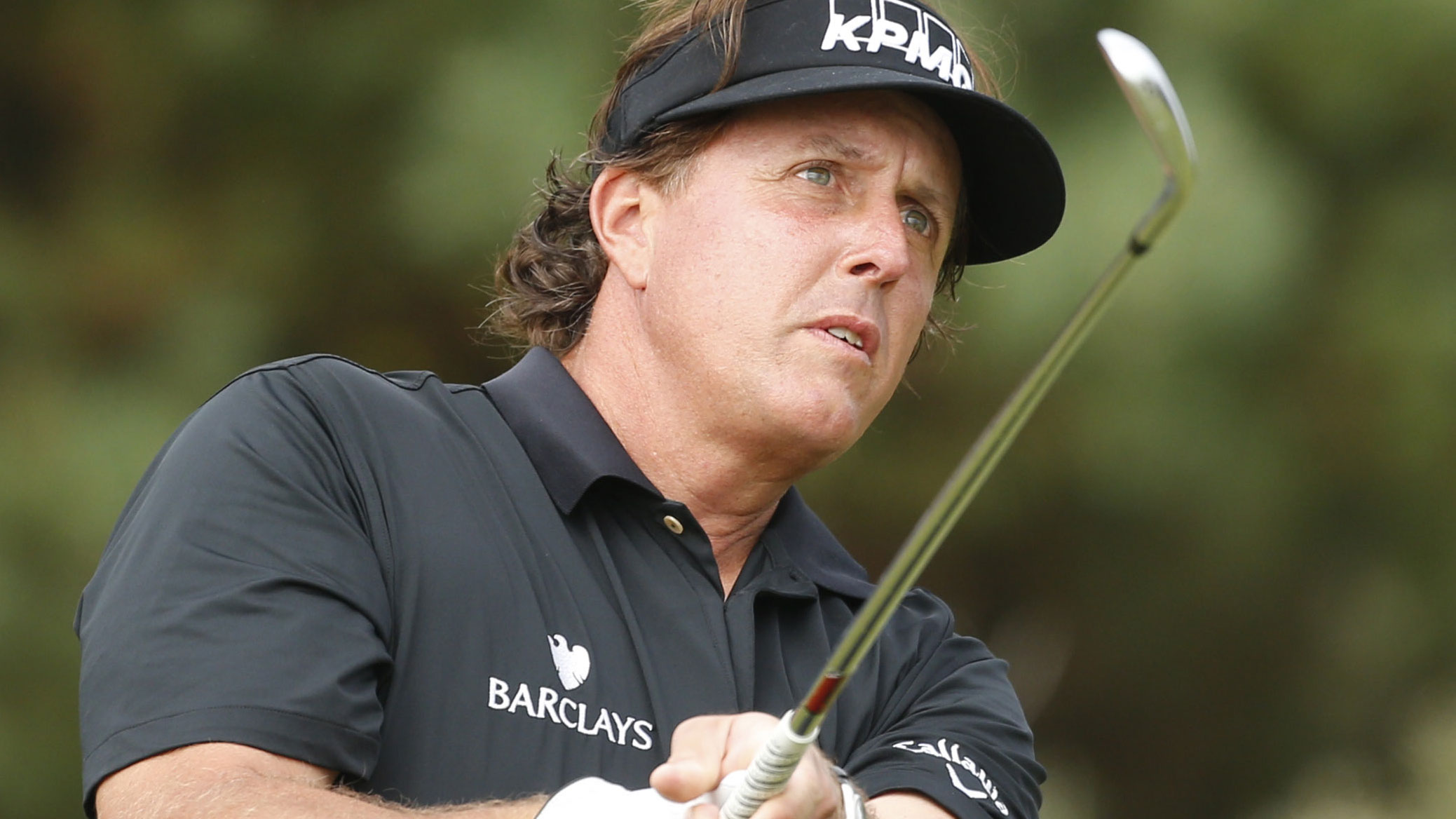A spot of wisdom from the man who co-designed this year’s U.S. Open track: This could be Lefty’s year.
Asked who was best suited to Pinehurst No. 2, the famed North Carolina golf course that looks a heck of a lot different today than it did the last time it played host to the major — there’s no rough(!) and the fairways are twice as wide in some places — and architect Bill Coore pointed to six-time U.S. Open runner-up, never-winner, Phil Mickelson.
“He has the imagination, the touch, the short and the long game,” said Coore, a North Carolina native who with two-time Masters champion Ben Crenshaw restored Pinehurst No. 2 for this year’s U.S. Open, bringing it closer to the original intent of its designer, renowned architect, Donald Ross.
“My guess is Mickelson could figure it out, and enjoy the process,” Coore told Sportsnet, as he walked the course a couple weeks ago. “It’s going to take somebody who enjoys a bit of unpredictability and unknown, and who doesn’t get too rattled if they miss a fairway and find out that their ball is in a really tough spot.”
That’s right: Coore says despite the fact there’s no thick, Bermuda rough—and that could be, he says, a first in the 114-year history of the U.S. Open—the sand, pine straw and native vegetation that now line the fairways is going to set up for some imaginative, and probably disastrous, approach shots.
“Some balls will come to rest in positions that you can play spectacular shots to the green,” Coore said. “Other balls will come to rest in places that’ll be a great mystery. You won’t know what could happen. I think you’re gonna see some of the most spectacular shots from the rough that you’ve ever seen in the United States Open. Some will be spectacularly successful, and some will be bizarre, because the lies are so unpredictable.”
In determining the design of the course, Crenshaw and Coore researched old photos and historical documents in Pinehurst’s archives. While Bermuda rough lined the fairways in recent years, the pair decided to return to the native vegetation used by Ross, who called No. 2 “the fairest test of championship golf I have ever designed.”
The greens remain, as Coore puts it, “the primary defence of the course.” In other words, they’re penal.
“You’ll see a lot of balls that land and look like they’re fairly well on the green, but you’ll see them start to make turns and go off the greens,” he said. “TV flattens everything, so all these dips and humps and rolls that are all around and on the greens will probably not show up here. You’ll be wondering why the best players in the world can’t hit a better shot than that. A lot of it is based on subtleties.
“That’s why I say a long player may win here, but it has to be a long player that has a lot of finesse.”
Enter, Lefty. And though Mickelson may be in a bit of hot water over allegations of insider trading (which he vehemently denies), you have to like his chances of making good at the now revamped site of one of his six runner-up finishes, since the guy who designed it says so.
Watch this recap of the duel between Mickelson and the late, great Payne Stewart at the 1999 U.S. Open at Pinehurst:
And lastly, a little help for the players—Pinehurst also hosts the U.S. Women’s Open, next week. Coore breaks down the three toughest holes, and offers a tip or two:
No. 2, par 4, 402 yards
“The green is convex and has a big puff hump at the front middle that repels the balls all sorts of ways. Off the tee, if you can get your ball close to the bunkers on the left side of the fairway, you actually have a better angle to play to the green, because of that hump. It’ll be one of the holes without question that will play to one of the higher score averages.
No. 6, par 3, 219 yards
“It’s an extremely demanding par 3. It could play as long as 230-some yards. There’s a deep bunker to the left, and bunkers to the right and short right. The key to getting on the green is avoiding the front 30 feet. If you land on that, the ball simply turns around and rolls backwards. No. 6 is one of the most crowned greens on the course.”
No. 11, par 4, 483 yards
“It’s a long par 4, and a new tee was built on that hole. In the last Open, I think a lot of players were hitting short irons to the green. This year, that’s probably not gonna happen. The green, again, it’s not as severe as No. 2 or No. 6, but it demands precise and strong play.”


